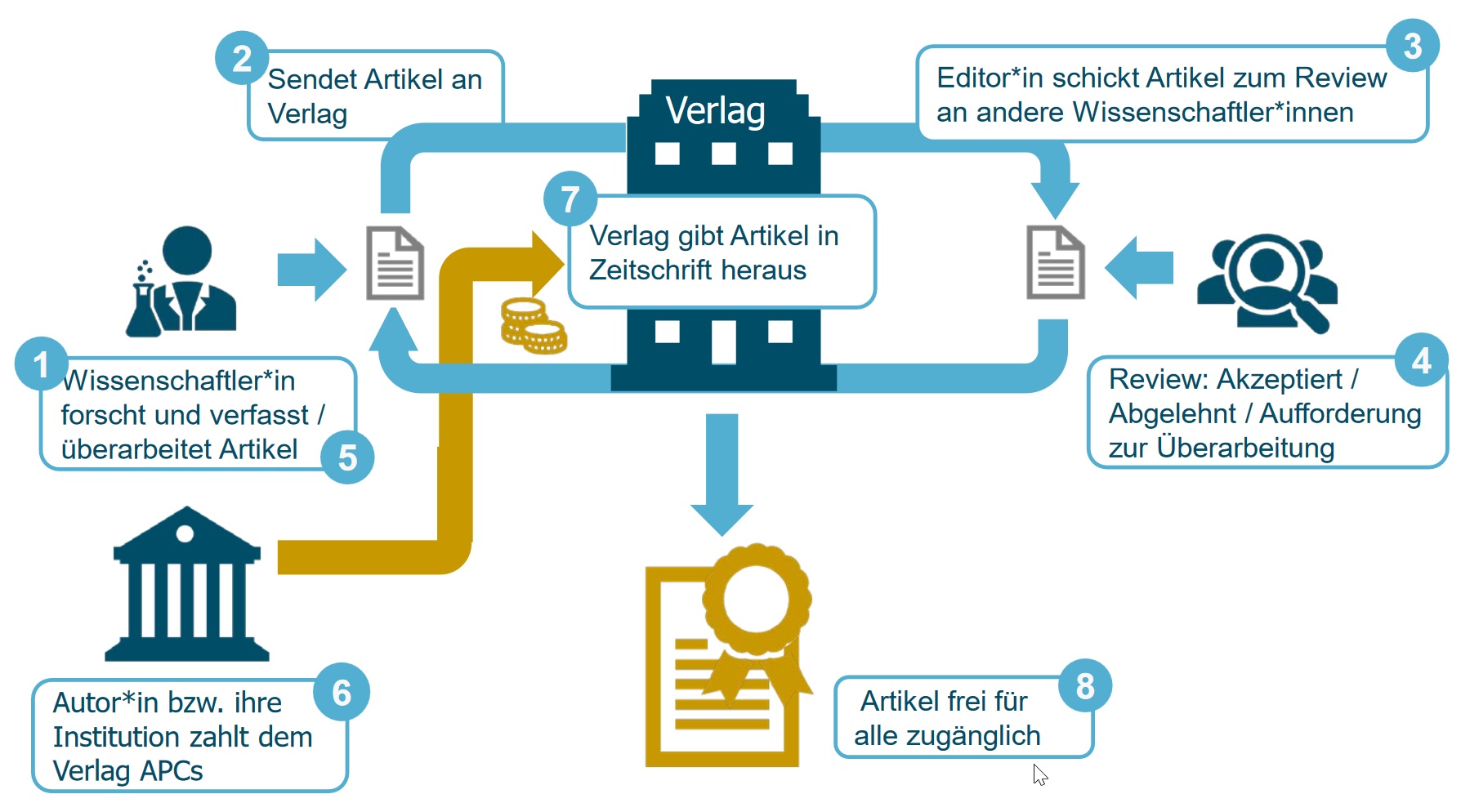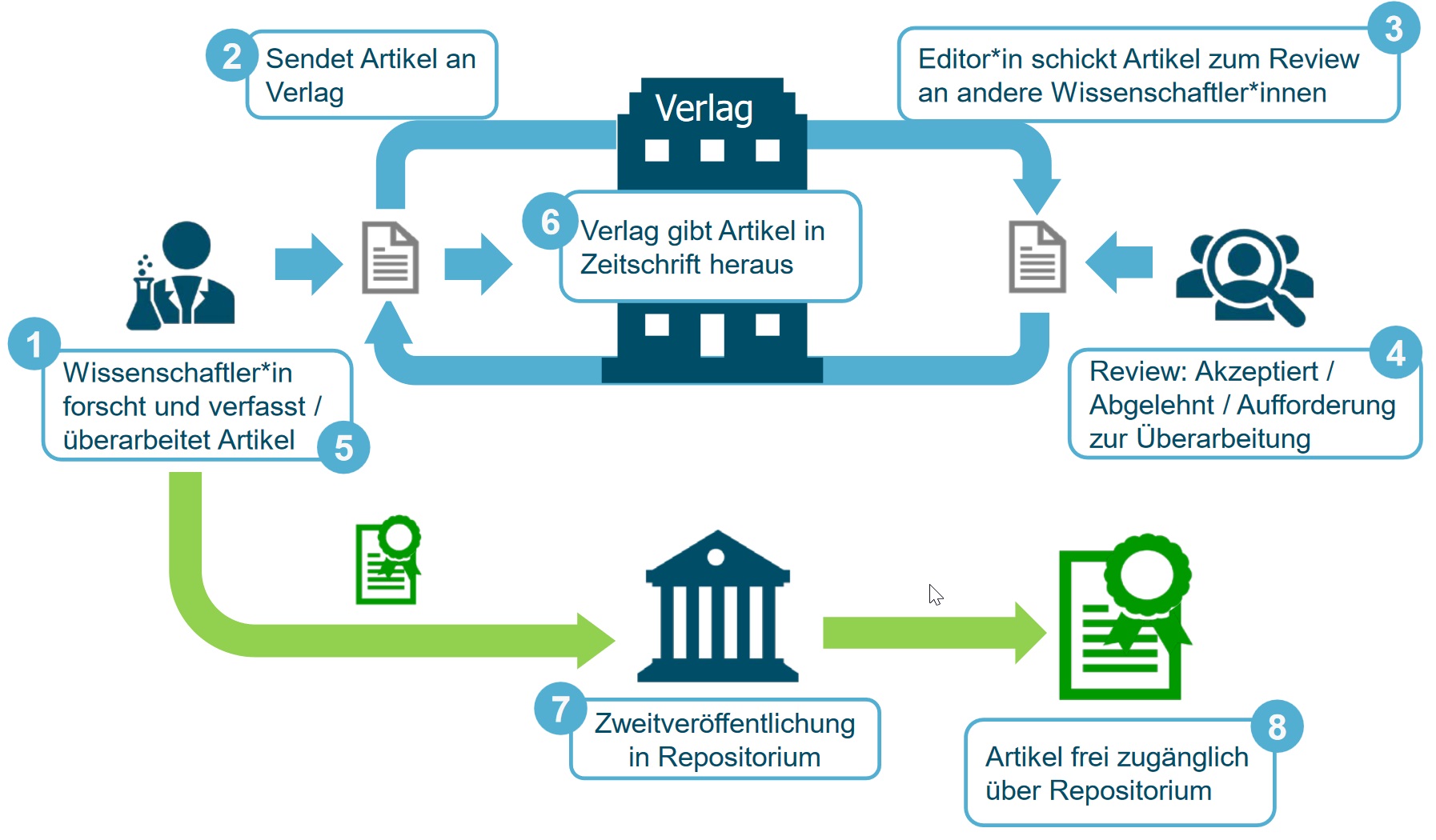
Step 1: Know the publication channels!
The aim of open access is to make academic literature freely accessible and reusable - in the sense of the Budapest Declaration, this means free of charge and without technical and legal barriers.
Among other things, open access increases the efficiency of research and innovation and promotes networking and collaboration between researchers. In addition, open access increases the frequency of citations and thus also the visibility of your research results.
- Budapest Declaration
of the Budapest Open Access Initiative (2002)
- Berlin Declaration
on Open Access to Knowledge in the Sciences and Humanities (2003)
- Open Access: Reasons and reservations
A compilation by open-access.network
Weitere Dokumente/ Antragsformulare finden Sie hier: https://www.htw-dresden.de/en/publishing-open-access/step-1
Ways of Open Access
There are various publication channels to choose from: A basic distinction is made between Gold Open Access and Green Open Access . There are also sub- and hybrid forms such as Diamond Open Access and Hybrid Open Access. Below you will find out what characterises and distinguishes the individual publication channels.
Gold Open Access refers to the immediate and free availability of a scientific publication by first publishing it in an Open Access journal. The publication undergoes the same quality assurance process (usually peer review) as a closed access publication.
Authors usually conclude a contract with a publisher that regulates which rights of use the authors grant the publisher, which terms of use apply to openly accessible documents and which costs (Article Processing Charges, so-called APCs) the authors incur.
Strictly speaking, Diamond Open Access is a subtype of Gold Open Access. Here, too, scientific publications appear as a first publication in an open access journal and undergo the recognised quality assurance processes.
In contrast to Gold Open Access, authors do not incur any costs. These are borne, for example, by scientific institutions or associations, sponsors or library consortia, some of which act as publishers themselves.
Green Open Access refers to the secondary publication of academic publications that have previously been published in closed access by a publisher on an institutional or disciplinary Open Access publication server(repository).
The expiry of the so-called embargo period is decisive for the time of secondary publication.
If it is a publication that has been produced as part of publicly funded research, the secondary publication right applies: this allows authors to republish after 12 months, even if the publisher has previously been granted exclusive rights. If the research is not publicly funded, the decisive factor is whether and which embargo periods have been contractually agreed between the author and publisher. The open policy finder database provides a good overview of the respective publisher requirements.
Hybrid Open Access refers to the offer by individual publishers to make articles from traditionally fee-based journals available Open Access in return for payment of a fee.
Hybrid Open Access is particularly important in the context of the DEAL contracts with Elsevier, Springer Nature and Wiley. Under these agreements, members of the HTWD have the opportunity to publish Open Access in the fee-based subscription journals of these publishers against payment of a so-called Publish-and-Read Fee (PAR Fee for short). Members of the HTWD can apply for a grant from the Publication Fund to pay the PAR fee.
Outside of such framework agreements, however, Hybrid Open Access must be viewed critically: On the one hand, the fees charged are often disproportionately more expensive compared to the APCs incurred for Gold Open Access; on the other hand, institutions pay twice for hybrid publications if their library has already subscribed to the journal.
- Continue to step 2
Find the place of publication!
Weitere Dokumente/ Antragsformulare finden Sie hier: https://www.htw-dresden.de/en/publishing-open-access/step-1



